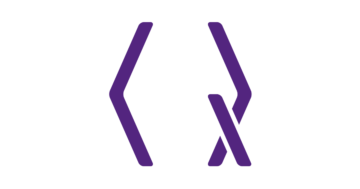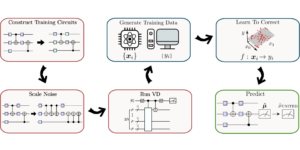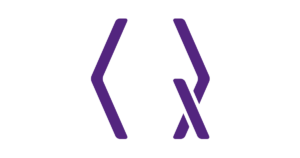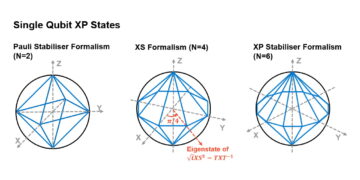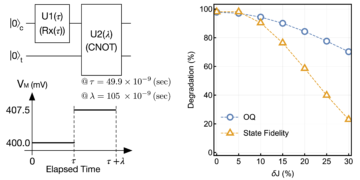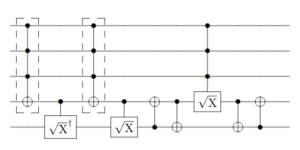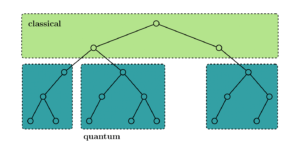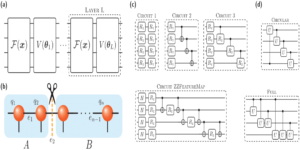1Zapata Computing, Inc., 100 Federal Street, 20th Floor, Boston, Massachusetts 02110, USA
2Harvard University
3Institute of High Performance Computing, Agency for Science, Technology and Research (A*STAR), 1 Fusionopolis Way, #16-16 Connexis, Singapore 138632, Singapore
Find this paper interesting or want to discuss? Scite or leave a comment on SciRate.
Abstract
Parameterized quantum circuits (PQCs) are a central component of many variational quantum algorithms, yet there is a lack of understanding of how their parameterization impacts algorithm performance. We initiate this discussion by using principal bundles to geometrically characterize two-qubit PQCs. On the base manifold, we use the Mannoury-Fubini-Study metric to find a simple equation relating the Ricci scalar (geometry) and concurrence (entanglement). By calculating the Ricci scalar during a variational quantum eigensolver (VQE) optimization process, this offers us a new perspective to how and why Quantum Natural Gradient outperforms the standard gradient descent. We argue that the key to the Quantum Natural Gradient’s superior performance is its ability to find regions of high negative curvature early in the optimization process. These regions of high negative curvature appear to be important in accelerating the optimization process.
Featured image: Addition of single qubit gates allows the Quantum Natural gradient to find places of negative Ricci curvature. Note that before we could not find the ground state which is entangled and so addition of single qubit gates does not change the entanglement properties of the ansatz and yet their addition allowed us to find an entangled state we could not previously find; we argue that what changed was the geometry.
[embedded content]
Popular summary
► BibTeX data
► References
[1] Marco Cerezo, Andrew Arrasmith, Ryan Babbush, Simon C Benjamin, Suguru Endo, Keisuke Fujii, Jarrod R McClean, Kosuke Mitarai, Xiao Yuan, Lukasz Cincio, et al. Variational quantum algorithms. Nature Reviews Physics, 3:625–644, 2021. 10.1038/s42254-021-00348-9.
https://doi.org/10.1038/s42254-021-00348-9
[2] Kishor Bharti, Alba Cervera-Lierta, Thi Ha Kyaw, Tobias Haug, Sumner Alperin-Lea, Abhinav Anand, Matthias Degroote, Hermanni Heimonen, Jakob S. Kottmann, Tim Menke, Wai-Keong Mok, Sukin Sim, Leong-Chuan Kwek, and Alán Aspuru-Guzik. Noisy intermediate-scale quantum algorithms. Rev. Mod. Phys., 94:015004, Feb 2022. 10.1103/RevModPhys.94.015004.
https://doi.org/10.1103/RevModPhys.94.015004
[3] M.-H. Yung, J. Casanova, A. Mezzacapo, J. McClean, L. Lamata, A. Aspuru-Guzik, and E. Solano. From transistor to trapped-ion computers for quantum chemistry. Sci. Rep, 4:3589, may 2015. 10.1038/srep03589.
https://doi.org/10.1038/srep03589
[4] Yudong Cao, Jonathan Romero, Jonathan P. Olson, Matthias Degroote, Peter D. Johnson, Mária Kieferová, Ian D. Kivlichan, Tim Menke, Borja Peropadre, Nicolas P.D. Sawaya, Sukin Sim, Libor Veis, and Alán Aspuru-Guzik. Quantum Chemistry in the Age of Quantum Computing. Chemical Reviews, 119(19):10856–10915, oct 2019. 10.1021/acs.chemrev.8b00803.
https://doi.org/10.1021/acs.chemrev.8b00803
[5] Abhinav Anand, Philipp Schleich, Sumner Alperin-Lea, Phillip W. K. Jensen, Sukin Sim, Manuel Díaz-Tinoco, Jakob S. Kottmann, Matthias Degroote, Artur F. Izmaylov, and Alán Aspuru-Guzik. A quantum computing view on unitary coupled cluster theory. Chem. Soc. Rev., 51:1659–1684, March 2022. 10.1039/D1CS00932J.
https://doi.org/10.1039/D1CS00932J
[6] Vojtěch Havlíček, Antonio D. Córcoles, Kristan Temme, Aram W. Harrow, Abhinav Kandala, Jerry M. Chow, and Jay M. Gambetta. Supervised learning with quantum-enhanced feature spaces. Nature, 567:209–212, mar 2019. 10.1038/s41586-019-0980-2.
https://doi.org/10.1038/s41586-019-0980-2
[7] Abhinav Kandala, Antonio Mezzacapo, Kristan Temme, Maika Takita, Markus Brink, Jerry M. Chow, and Jay M. Gambetta. Hardware-efficient variational quantum eigensolver for small molecules and quantum magnets. Nature, 549:242–246, Sept 2017. 10.1038/nature23879.
https://doi.org/10.1038/nature23879
[8] Stig Elkjær Rasmussen, Niels Jakob Søe Loft, Thomas Bækkegaard, Michael Kues, and Nikolaj Thomas Zinner. Reducing the Amount of Single‐Qubit Rotations in VQE and Related Algorithms. Advanced Quantum Technologies, 3(12):2000063, dec 2020. 10.1002/qute.202000063.
https://doi.org/10.1002/qute.202000063
[9] Sukin Sim, Jonathan Romero, Jérôme F. Gonthier, and Alexander A. Kunitsa. Adaptive pruning-based optimization of parameterized quantum circuits. Quantum Science and Technology, 6(2):025019, apr 2021. 10.1088/2058-9565/abe107.
https://doi.org/10.1088/2058-9565/abe107
[10] Lena Funcke, Tobias Hartung, Karl Jansen, Stefan Kühn, and Paolo Stornati. Dimensional Expressivity Analysis of Parametric Quantum Circuits. Quantum, 5:422, March 2021. 10.22331/q-2021-03-29-422.
https://doi.org/10.22331/q-2021-03-29-422
[11] Jarrod R. McClean, Sergio Boixo, Vadim N. Smelyanskiy, Ryan Babbush, and Hartmut Neven. Barren plateaus in quantum neural network training landscapes. Nat. Commun, 9:4812, 2018. 10.1038/s41467-018-07090-4.
https://doi.org/10.1038/s41467-018-07090-4
[12] Andrew Arrasmith, Zoë Holmes, M Cerezo, and Patrick J Coles. Equivalence of quantum barren plateaus to cost concentration and narrow gorges. Quantum Science and Technology, 7(4):045015, aug 2022. 10.1088/2058-9565/ac7d06.
https://doi.org/10.1088/2058-9565/ac7d06
[13] Sukin Sim, Peter D. Johnson, and Alán Aspuru-Guzik. Expressibility and entangling capability of parameterized quantum circuits for hybrid quantum-classical algorithms. Advanced Quantum Technologies, 2(12):1900070, 2019. 10.1002/qute.201900070.
https://doi.org/10.1002/qute.201900070
[14] Thomas Hubregtsen, Josef Pichlmeier, Patrick Stecher, and Koen Bertels. Evaluation of parameterized quantum circuits: on the relation between classification accuracy, expressibility, and entangling capability. Quantum Machine Intelligence, 3:9, 2021. 10.1007/s42484-021-00038-w.
https://doi.org/10.1007/s42484-021-00038-w
[15] Zoë Holmes, Kunal Sharma, M. Cerezo, and Patrick J. Coles. Connecting ansatz expressibility to gradient magnitudes and barren plateaus. PRX Quantum, 3:010313, Jan 2022. 10.1103/PRXQuantum.3.010313.
https://doi.org/10.1103/PRXQuantum.3.010313
[16] James Stokes, Josh Izaac, Nathan Killoran, and Giuseppe Carleo. Quantum natural gradient. Quantum, 4:269, 2020. 10.22331/q-2020-05-25-269.
https://doi.org/10.22331/q-2020-05-25-269
[17] Tobias Haug, Kishor Bharti, and M.S. Kim. Capacity and quantum geometry of parametrized quantum circuits. PRX Quantum, 2:040309, Oct 2021. 10.1103/PRXQuantum.2.040309.
https://doi.org/10.1103/PRXQuantum.2.040309
[18] Tobias Haug and M. S. Kim. Optimal training of variational quantum algorithms without barren plateaus. arXiv preprint arXiv:2104.14543, 2021. 10.48550/arXiv.2104.14543.
https://doi.org/10.48550/arXiv.2104.14543
arXiv:2104.14543
[19] Tyson Jones. Efficient classical calculation of the quantum natural gradient. arXiv preprint arXiv:2011.02991, 2020. 10.48550/arXiv.2011.02991.
https://doi.org/10.48550/arXiv.2011.02991
arXiv:2011.02991
[20] Barnaby van Straaten and Bálint Koczor. Measurement cost of metric-aware variational quantum algorithms. PRX Quantum, 2:030324, Aug 2021. 10.1103/PRXQuantum.2.030324.
https://doi.org/10.1103/PRXQuantum.2.030324
[21] Bálint Koczor and Simon C Benjamin. Quantum natural gradient generalised to non-unitary circuits. arXiv preprint arXiv:1912.08660, 2019. 10.48550/arXiv.1912.08660.
https://doi.org/10.48550/arXiv.1912.08660
arXiv:1912.08660
[22] Hoshang Heydari. Geometric formulation of quantum mechanics. arXiv preprint arXiv:1503.00238, 2015. 10.48550/arXiv.1503.00238.
https://doi.org/10.48550/arXiv.1503.00238
arXiv:1503.00238
[23] Robert Geroch. Robert Geroch, Geometrical Quantum Mechanics: 1974 Lecture Notes. Minkowski Institute Press, Montreal 2013, 2013.
[24] Ran Cheng. Quantum geometric tensor (Fubini-Study metric) in simple quantum system: A pedagogical introduction. arXiv preprint arXiv:1012.1337, 2010. 10.48550/arXiv.1012.1337.
https://doi.org/10.48550/arXiv.1012.1337
arXiv:1012.1337
[25] Jutho Haegeman, Michaël Marien, Tobias J. Osborne, and Frank Verstraete. Geometry of matrix product states: Metric, parallel transport, and curvature. J. Math. Phys, 55(2):021902, 2014. 10.1063/1.4862851.
https://doi.org/10.1063/1.4862851
[26] Naoki Yamamoto. On the natural gradient for variational quantum eigensolver. arXiv preprint arXiv:1909.05074, 2019. 10.48550/arXiv.1909.05074.
https://doi.org/10.48550/arXiv.1909.05074
arXiv:1909.05074
[27] Pierre-Luc Dallaire-Demers, Jonathan Romero, Libor Veis, Sukin Sim, and Alán Aspuru-Guzik. Low-depth circuit ansatz for preparing correlated fermionic states on a quantum computer. Quantum Sci. Technol, 4(4):045005, Sept 2019. 10.1088/2058-9565/ab3951.
https://doi.org/10.1088/2058-9565/ab3951
[28] Pierre-Luc Dallaire-Demers and Nathan Killoran. Quantum generative adversarial networks. Phys. Rev. A, 98:012324, jul 2018. 10.1103/PhysRevA.98.012324.
https://doi.org/10.1103/PhysRevA.98.012324
[29] Pierre-Luc Dallaire-Demers, Michał Stęchły, Jerome F Gonthier, Ntwali Toussaint Bashige, Jonathan Romero, and Yudong Cao. An application benchmark for fermionic quantum simulations. arXiv preprint arXiv:2003.01862, 2020. 10.48550/arXiv.2003.01862.
https://doi.org/10.48550/arXiv.2003.01862
arXiv:2003.01862
[30] Frank Arute, Kunal Arya, Ryan Babbush, Dave Bacon, Joseph C Bardin, Rami Barends, Rupak Biswas, Sergio Boixo, Fernando GSL Brandao, David A Buell, et al. Quantum supremacy using a programmable superconducting processor. Nature, 574:505–510, 2019. 10.1038/s41586-019-1666-5.
https://doi.org/10.1038/s41586-019-1666-5
[31] Chu-Ryang Wie. Two-qubit Bloch sphere. Physics, 2(3):383–396, 2020. 10.3390/physics2030021.
https://doi.org/10.3390/physics2030021
[32] Péter Lévay. The geometry of entanglement: metrics, connections and the geometric phase. Journal of Physics A: Mathematical and General, 37(5):1821–1841, jan 2004. 10.1088/0305-4470/37/5/024.
https://doi.org/10.1088/0305-4470/37/5/024
[33] James Martens and Roger Grosse. Optimizing neural networks with kronecker-factored approximate curvature. In Francis Bach and David Blei, editors, Proceedings of the 32nd International Conference on Machine Learning, volume 37 of Proceedings of Machine Learning Research, pages 2408–2417, Lille, France, 07–09 Jul 2015. PMLR.
[34] Alberto Bernacchia, Máté Lengyel, and Guillaume Hennequin. Exact natural gradient in deep linear networks and application to the nonlinear case. In Proceedings of the 32nd International Conference on Neural Information Processing Systems, NIPS’18, page 5945–5954, Red Hook, NY, USA, 2018. Curran Associates Inc.
[35] Sam A. Hill and William K. Wootters. Entanglement of a pair of quantum bits. Phys. Rev. Lett., 78:5022–5025, Jun 1997. 10.1103/PhysRevLett.78.5022.
https://doi.org/10.1103/PhysRevLett.78.5022
[36] Li Chen, Ming Yang, Li-Hua Zhang, and Zhuo-Liang Cao. Directly measuring the concurrence of two-atom state via detecting coherent lights. Laser Phys. Lett., 14(11):115205, oct 2017. 10.1088/1612-202X/aa8582.
https://doi.org/10.1088/1612-202X/aa8582
[37] Lan Zhou and Yu-Bo Sheng. Concurrence measurement for the two-qubit optical and atomic states. Entropy, 17(6):4293–4322, 2015. 10.3390/e17064293.
https://doi.org/10.3390/e17064293
[38] Sean M. Carroll. Spacetime and Geometry: An Introduction to General Relativity. Cambridge University Press, 2019. 10.1017/9781108770385.
https://doi.org/10.1017/9781108770385
[39] Anshuman Dey, Subhash Mahapatra, Pratim Roy, and Tapobrata Sarkar. Information geometry and quantum phase transitions in the Dicke model. Phys. Rev. E, 86(3):031137, Sept 2012. 10.1103/PhysRevE.86.031137.
https://doi.org/10.1103/PhysRevE.86.031137
[40] Rıza Erdem. Quantum lattice model with local multi-well potentials: Riemannian geometric interpretation for the phase transitions in ferroelectric crystals. Physica A: Statistical Mechanics and its Applications, 556:124837, 2020. 10.1016/j.physa.2020.124837.
https://doi.org/10.1016/j.physa.2020.124837
[41] Michael Kolodrubetz, Vladimir Gritsev, and Anatoli Polkovnikov. Classifying and measuring geometry of a quantum ground state manifold. Phys. Rev. B, 88:064304, Aug 2013. 10.1103/PhysRevB.88.064304.
https://doi.org/10.1103/PhysRevB.88.064304
[42] Michael Hauser and Asok Ray. Principles of Riemannian geometry in neural networks. In I. Guyon, U. V. Luxburg, S. Bengio, H. Wallach, R. Fergus, S. Vishwanathan, and R. Garnett, editors, Advances in Neural Information Processing Systems, volume 30. Curran Associates, Inc., 2017.
[43] T. Yu, H. Long, and J. E. Hopcroft. Curvature-based comparison of two neural networks. In 2018 24th International Conference on Pattern Recognition (ICPR), pages 441–447, 2018. 10.1109/ICPR.2018.8546273.
https://doi.org/10.1109/ICPR.2018.8546273
[44] P. Kaul and B. Lall. Riemannian curvature of deep neural networks. IEEE Trans. Neural Netw. Learn. Syst., 31(4):1410–1416, 2020. 10.1109/TNNLS.2019.2919705.
https://doi.org/10.1109/TNNLS.2019.2919705
[45] Alberto Peruzzo, Jarrod McClean, Peter Shadbolt, Man-Hong Yung, Xiao-Qi Zhou, Peter J. Love, Alán Aspuru-Guzik, and Jeremy L. O’Brien. A variational eigenvalue solver on a photonic quantum processor. Nat. Commun, 5:4213, Sept 2014. 10.1038/ncomms5213.
https://doi.org/10.1038/ncomms5213
[46] Peter JJ O’Malley, Ryan Babbush, Ian D Kivlichan, Jonathan Romero, Jarrod R McClean, Rami Barends, Julian Kelly, Pedram Roushan, Andrew Tranter, Nan Ding, et al. Scalable quantum simulation of molecular energies. Physical Review X, 6(3):031007, 2016. 10.1103/PhysRevX.6.031007.
https://doi.org/10.1103/PhysRevX.6.031007
[47] John Frank Adams. On the nonexistence of elements of Hopf invariant one. Bull. Am. Math. Soc, 64(5):279–282, 1958.
[48] Shreyas Bapat, Ritwik Saha, Bhavya Bhatt, Hrushikesh Sarode, Gaurav Kumar, and Priyanshu Khandelwal. einsteinpy/einsteinpy: EinsteinPy 0.1a1 (Alpha Release – 1), March 2019. 10.5281/zenodo.2582388.
https://doi.org/10.5281/zenodo.2582388
[49] Wolfram Research, Inc. Mathematica, Version 12.0. Champaign, IL, 2019.
[50] Jarrod R McClean, Nicholas C Rubin, Kevin J Sung, Ian D Kivlichan, Xavier Bonet-Monroig, Yudong Cao, Chengyu Dai, E Schuyler Fried, Craig Gidney, Brendan Gimby, et al. Openfermion: the electronic structure package for quantum computers. Quantum Science and Technology, 5(3):034014, 2020. 10.1088/2058-9565/ab8ebc.
https://doi.org/10.1088/2058-9565/ab8ebc
[51] Ville Bergholm, Josh Izaac, Maria Schuld, Christian Gogolin, Shahnawaz Ahmed, Vishnu Ajith, M. Sohaib Alam, Guillermo Alonso-Linaje, B. AkashNarayanan, Ali Asadi, et al. Pennylane: Automatic differentiation of hybrid quantum-classical computations. arXiv preprint arXiv:1811.04968, 2018. 10.48550/arXiv.1811.04968.
https://doi.org/10.48550/arXiv.1811.04968
arXiv:1811.04968
Cited by
[1] Tobias Haug and M. S. Kim, “Natural parameterized quantum circuit”, arXiv:2107.14063.
[2] Francesco Scala, Stefano Mangini, Chiara Macchiavello, Daniele Bajoni, and Dario Gerace, “Quantum variational learning for entanglement witnessing”, arXiv:2205.10429.
[3] Roeland Wiersema and Nathan Killoran, “Optimizing quantum circuits with Riemannian gradient flow”, arXiv:2202.06976.
The above citations are from SAO/NASA ADS (last updated successfully 2022-08-26 00:47:32). The list may be incomplete as not all publishers provide suitable and complete citation data.
On Crossref’s cited-by service no data on citing works was found (last attempt 2022-08-26 00:47:30).
This Paper is published in Quantum under the Creative Commons Attribution 4.0 International (CC BY 4.0) license. Copyright remains with the original copyright holders such as the authors or their institutions.


